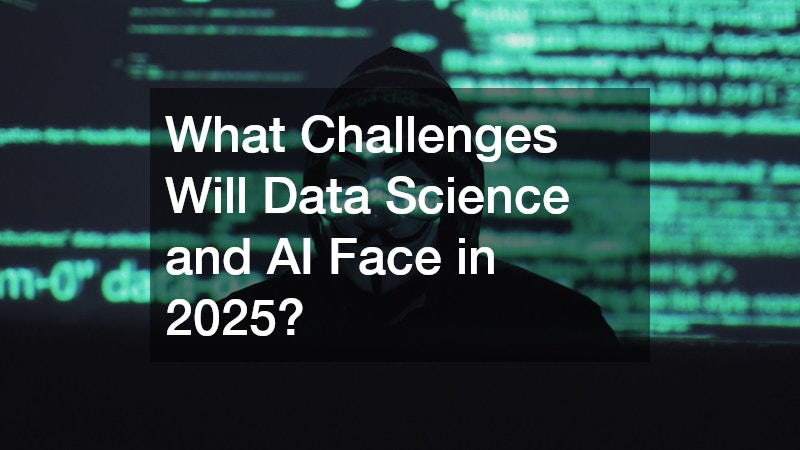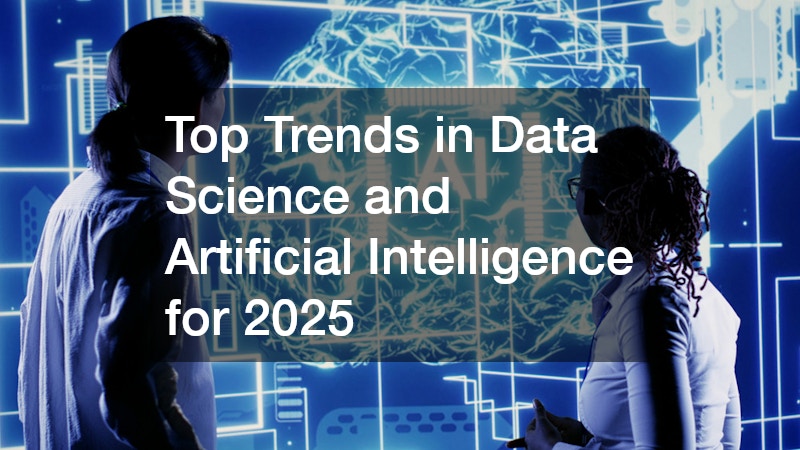As technology evolves at a breakneck pace, data science and artificial intelligence (AI) remain at the forefront of innovation. These fields are continuously shaping how we interact with technology, solve complex problems, and make data-driven decisions. For anyone curious about artificial intelligence and data science, understanding the emerging trends for 2025 is essential to grasp where these technologies are headed.
This article explores the most exciting developments, practical applications, and future possibilities that will define data science and AI in the coming years.
What Are the Biggest Trends in Data Science and Artificial Intelligence for 2025?
Data science and AI are dynamic fields, influenced by advancements in algorithms, computing power, and data availability. As we look toward 2025, several key trends stand out, promising to change how businesses, governments, and individuals use these technologies.
Emerging technologies like generative AI, edge computing, and explainable AI are becoming more mainstream. Additionally, ethical AI and responsible data practices are gaining attention as society grapples with privacy and fairness concerns. Let’s dive into the major trends that will impact AI and data science in the near future.
How Is Generative AI Changing the Landscape?

Generative AI, which involves AI systems creating new content—from text to images to music—is revolutionizing creative industries and business operations alike. Unlike traditional AI, which often focuses on analyzing data or making predictions, generative AI can produce novel outputs based on learned patterns.
- Examples of generative AI: Chatbots that write articles, AI art generators, and automated video content creation.
- Business impact: Automating content creation reduces costs and speeds up workflows.
- What to watch: Advances in models like GPT and DALL·E will make AI-generated content more realistic and personalized.
Generative AI will be a key driver in innovation across marketing, entertainment, and even software development by 2025.
Why Is Explainable AI Becoming a Priority?
As AI models grow more complex, understanding how they make decisions has become challenging. Explainable AI (XAI) focuses on making these processes transparent and interpretable. This is critical for gaining user trust and meeting regulatory requirements, especially in sectors like healthcare and finance.
- Benefits of explainable AI:
- Helps users understand AI decisions
- Supports compliance with ethical and legal standards
- Identifies biases in AI models early
By 2025, companies will increasingly adopt explainable AI techniques to answer artificial intelligence questions about transparency and fairness, making AI more trustworthy and accountable.
What Role Does Edge Computing Play in AI and Data Science?
Edge computing involves processing data near its source instead of relying solely on centralized cloud servers. This approach reduces latency, improves privacy, and saves bandwidth—advantages that are especially important for AI applications requiring real-time data processing.
- Use cases:
- Smart cities with real-time traffic management
- Autonomous vehicles reacting instantly to their surroundings
- IoT devices performing local AI analytics
By 2025, edge AI will be a standard in many industries, empowering faster, smarter, and more secure data processing.
How Are Ethical Considerations Shaping Data Science and AI?
With AI’s growing influence, ethical issues such as bias, privacy, and consent are more pressing than ever. The demand for responsible AI means organizations must design systems that are fair, transparent, and respect user rights.
- Key ethical focuses:
- Eliminating bias in datasets and algorithms
- Ensuring data privacy and user consent
- Developing AI with social and environmental responsibility
By integrating these principles, data scientists and AI developers can build technologies that align with societal values by 2025.
What Skills Will Be Most Valuable in Data Science and AI Careers?
For those curious about entering the data science and AI fields, understanding future skills demand is important. As technologies evolve, so do the skills required to harness them effectively.
- Top skills for 2025:
- Proficiency in machine learning frameworks and AI platforms
- Expertise in data engineering and big data technologies
- Knowledge of ethical AI practices and explainability
- Ability to work with edge computing and IoT devices
- Strong programming skills in Python, R, or Julia
Continuous learning and adaptability will be key as the AI landscape advances.
What Challenges Will Data Science and AI Face in 2025?

Despite rapid progress, there are challenges on the horizon. Data quality and security remain persistent issues. Handling vast amounts of data responsibly, combating misinformation, and maintaining human oversight over AI systems will be critical tasks.
- Common challenges:
- Data privacy and cybersecurity threats
- Managing bias and fairness in AI algorithms
- Integration of AI with legacy systems
- Public trust and regulation compliance
Addressing these challenges is necessary to unlock the full potential of data science and artificial intelligence.
Summary: Why Should You Care About These Trends?
The world is becoming more data-driven, and AI technologies are central to this transformation. Whether you’re a student, professional, or just curious, keeping up with the latest trends in data science and artificial intelligence prepares you to participate in the future of technology. From generative AI to ethical considerations and edge computing, 2025 promises exciting opportunities and important responsibilities in these fields.
